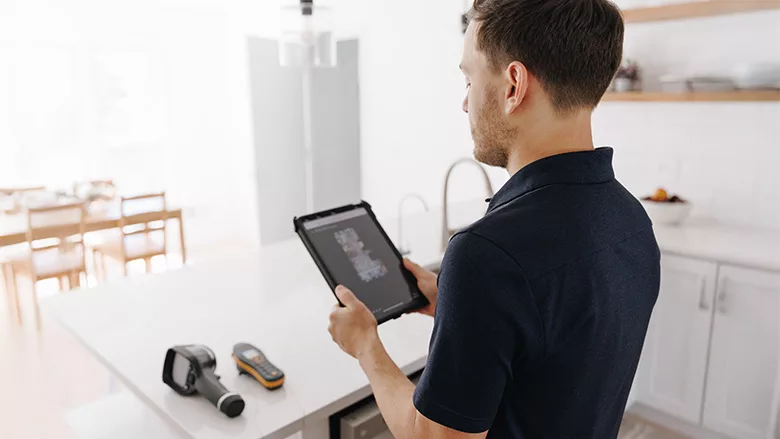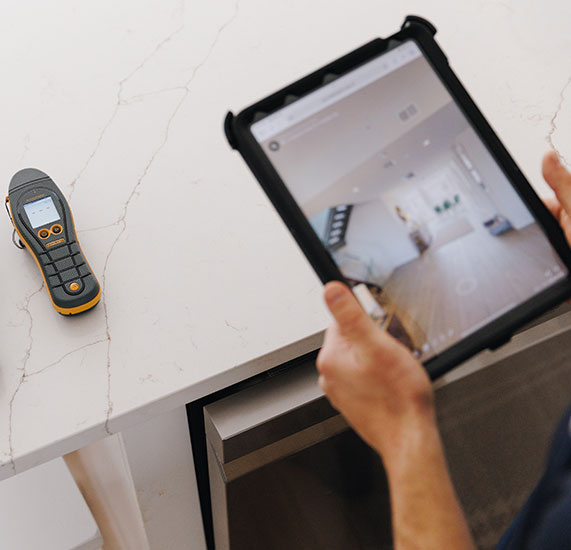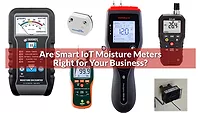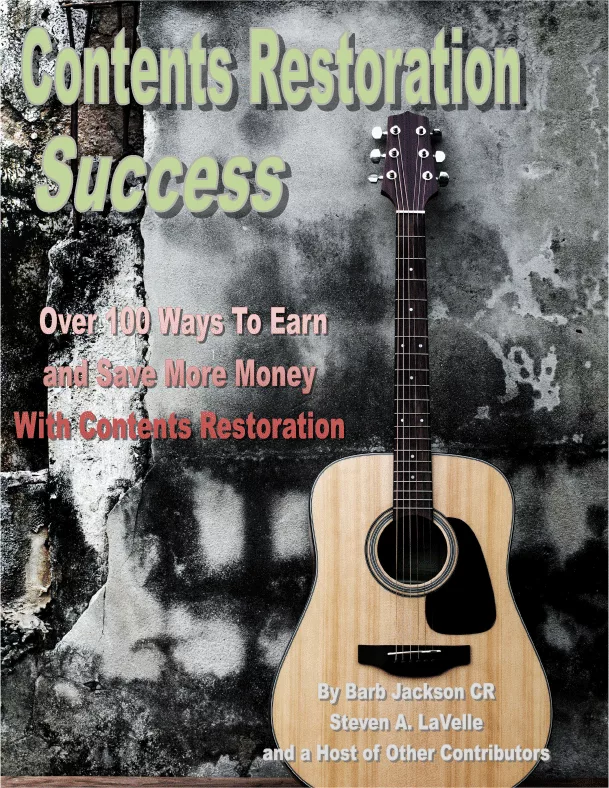Moisture Meters 101: Choosing, Using and Maintaining the Right Tools
Master moisture meter types, usage and care to ensure accurate readings for all your jobs

Photo Credit: Provision Property Restoration
If you’re in the restoration business, you already know that moisture meters are some of the most important tools we use daily. Whether it’s water damage from a burst pipe or excess moisture hiding behind walls, these devices help us find the problem, monitor drying progress and prevent long-term damage like mold.
However, not all moisture meters are created equal and using them correctly is key to getting accurate readings. In this article, we’ll go over the different types of moisture meters, how to use them properly and best practices for reliable moisture monitoring.
Different Meter Types
There are three main types of moisture meters, each with its strengths and best-use scenarios. Knowing which type you need for your project will help you complete the job in a more efficient and effective manner, saving you time and money and resulting in a satisfied customer.
1. Pin-Type Moisture Meters (For Deep, Precise Measurements)
These use two metal pins that penetrate the material, such as drywall, wood or subflooring. They work by measuring electrical resistance (more moisture equals less resistance). Their downside is that they leave tiny holes in surfaces, which might be an issue if you’re poking into finished material that won’t need to be replaced.
2. Pinless (Non-Penetrating) Moisture Meters (For Fast, Non-Invasive Scans)
These use electromagnetic sensors that scan moisture without damaging any surfaces. They’re great for quickly checking large areas like walls, ceilings and floors. They’re also best for giving you an overall idea of moisture levels without needing to leave any marks. However, their downside is that they can’t tell exactly how deep the moisture goes.
3. Combination (All-in-One) Meters (For Maximum Versatility)
Combo meters offer the best of both worlds — they come with both pin and pinless options. They let you quickly switch between surface scans and obtaining deep measurements, giving you the best results in little time. They’re best for restoration professionals who want flexibility in having both types of meters readily available. They do cost more than the other options though.
How To Use Your Meter Correctly
Even the best moisture meter won’t help if you’re using it wrong. Every restoration professional needs to know how to use their moisture meter correctly, otherwise they can find unexpected issues after tearing out their customers’ walls. These tools aren’t cheap, so investing in them to only end up not using them properly will only waste money in the initial tool purchase and in wasted resources on projects. Follow the below tips to get accurate, reliable moisture readings.
-
Always Calibrate First
Moisture meters need to be calibrated regularly to stay accurate. Check the manufacturer’s guide for calibration settings and how often you need to do it. Make sure to stick to this schedule to ensure that your investment is working properly.
-
Use the Right Material Setting
Many meters have settings for wood, drywall, concrete and more. Picking the right one ensures accurate readings (wood and concrete, for example, retain moisture differently).
-
Be Consistent With How You Measure
Always insert the pins to the same depth in pin meters. For pinless meters, apply even pressure and keep it flat against the surface.
-
Consider Environmental Factors
Temperature and humidity can affect moisture readings. Some meters adjust for this automatically but always check the surroundings before making decisions.
-
Keep Good Documentation
Write down your readings along with location, material and conditions. This helps track drying progress and gives proof for insurance or clients.

Photo Credit: Provision Property Restoration
Best Practices
Finding moisture is just the first step. Here are your best practices on how to properly track and manage moisture during a restoration job.
-
Set Clear Drying Goals
Compare affected areas to baseline moisture levels from dry parts of the building. Use these numbers as your target for drying.
-
Check Moisture Levels Regularly
Take readings at least once a day to see how the drying process is going. If moisture levels aren’t dropping, adjust the placement of your drying equipment.
-
Use Thermal Imaging for Hidden Moisture
Moisture meters are fantastic tools, but they only check specific spots. Thermal cameras help find trapped moisture behind walls and ceilings.
-
Use Non-Invasive Methods When Possible
If you’re in a historic home, high-value property or a space where the homeowner simply doesn’t want any physical marks, pinless meters and thermal imaging can detect moisture without damaging anything.
-
Train Your Team on Proper Use
Make sure everyone on your team knows how to use moisture meters correctly. Misreading a meter could mean missing moisture problems that lead to mold or structural issues.
How to Take Care of Your Moisture Meter
Your moisture meter needs maintenance too. Here’s how to keep it in top shape:
-
Keep It Clean
Wipe down the sensors and pins after every job, as dirt or residue can affect readings.
-
Monitor Battery Life
Low batteries can give false readings. Always carry extra batteries in your work bag if your meter isn’t rechargeable.
-
Store It Properly
Keep it in a protective case when not in use. Avoid hot, humid or dusty environments that could damage sensors.
-
Schedule Regular Calibration
Check your meter’s accuracy periodically, according to the manufacturer’s directions. Many meters come with a test block to ensure they’re reading correctly.
Moisture meters are one of the most important tools we have in restoration. Knowing which type to use, how to use them properly and how to maintain them makes a huge difference in the success of a job. By combining the right moisture meter with good restoration practices, we can detect water damage more accurately, speed up drying and prevent long-term problems like mold and structural damage. Getting moisture detection right saves time, money and helps us restore properties the right way, resulting in thrilled customers who will be more likely to refer us to their family and friends.
Looking for a reprint of this article?
From high-res PDFs to custom plaques, order your copy today!







